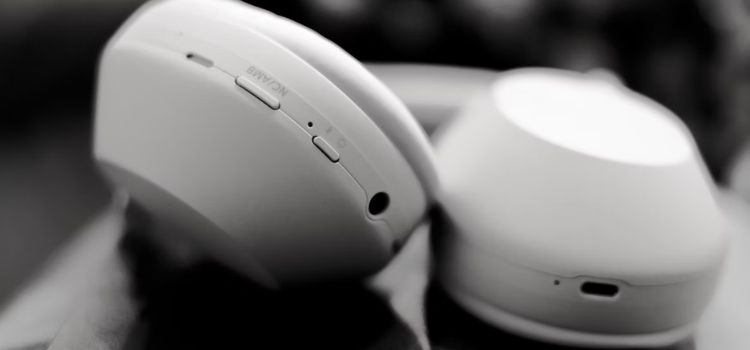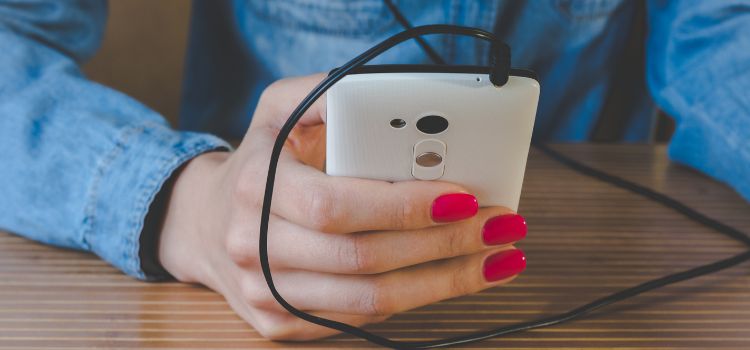Tired of mediocre sound quality on your music streaming app? We’re answering some questions we often receive about sound quality and streaming apps. Many revolve around Tidal’s music streaming service. Is Tidal actually lossless? Will LDAC improve sound quality? What are Tidal Masters? We’ve taken the time to answer each of these questions and more.
Table of Contents
Does LDAC Work On Tidal?
The short and simple answer is yes. Tidal is just a platform or app from which audio is streamed. Wireless streaming of this audio is facilitated by two Bluetooth devices. Your phone and wireless headphones would be one example. Those Bluetooth devices must support the LDAC codec to facilitate an LDAC connection. This is the case whether the audio is from Spotify, Youtube, or a random website.
What Is LDAC?
At Sound Unlocked, we get a lot of questions about LDAC support. LDAC is Sony’s proprietary audio codec technology that enables the improved transmission of wireless audio. With LDAC technology, high-res audio up to 990 kbps and 24-bit/96 kHz can be streamed via Bluetooth. LDAC is a software codec and compatibility is dependent on the devices facilitating the Bluetooth connection. The most popular use case will be Bluetooth headphones and a smartphone. You can use LDAC to improve wireless audio when streaming over Bluetooth if both of these devices support LDAC.
Many popular Bluetooth headphones like Sony’s WH-1000XM5 include support for the LDAC codec. While the XM5 WH-1000XM5s are one of the best ANC headphones available, you can also find LDAC on a few more affordable options. Android phones have support for LDAC but it sometimes must be enabled manually in the developer option. At the same time, iPhones don’t have support for LDAC. Other devices with support for the LDAC codec include portable media players, active speakers, receivers, and more.
Will LDAC Improve Tidal Sound Quality?

Yes. Assuming there is a reliable Bluetooth connection, LDAC will improve the sound quality of wireless audio. There is some gray area in how often 990 kbps / 24-bit audio can be achieved via LDAC and connection strength plays a factor. Even in the most ideal environments, wireless connections can have issues. But LDAC is undoubtedly a value-added for those looking for the best music streaming experience without a wired connection. LDAC will not be superior to a lossless connection though.
When opting to listen to music with wireless headphones, listeners are hearing audio data transmitted via Bluetooth and all its limitations. As an example, Tidal’s lossless HiFi offering is capable of streaming uncompressed lossless music up to 1411 kbps. But even with the improvement of the LDAC codec, your bitrate will be capped at 990 kbps even with a lossless audio file. This is the difference between the quality of the source file and the limitations of the Bluetooth transmission technology. Wireless audio will be of higher quality with LDAC versus a regular Bluetooth connection. But LDAC still can not deliver lossless quality audio no matter the source of the file streaming services offer. Lossless streaming services can promise hi-res, cd quality audio. But there are always caveats and limitations with what users will actually hear.
What Is Lossless Audio?
Lossless audio is a term that describes digital audio files specifically created with the intention of keeping all the detail of the original track. This is in contrast to lossy audio files which are heavily compressed. This compression process degrades the audio quality and results in much less detail than CD-quality audio. One positive of lossy audio files is that they can reduce the size of the audio files. Lossy AAC files can reduce the size of original audio recordings by 70% or more. These smaller lossy audio files made it much easier for a music service to stream music to users.
While lossless audio does result in high-quality audio, it’s still compressed. Tracks with lossless compression like FLAC files are just compressed in a way that allows them to be reconstructed during the decoding process. After the decoding process, the result you hear is uncompressed audio data. This is similar to a zip file you download that is smaller than the files inside it. Most lossless audio files can still reduce the size of the original track by about half. But what streaming services have begun to realize is there is some demand for lossless audio streaming and high-quality audio. This has resulted in streaming services working to incorporate high-resolution audio and immersive sound formats. Customers are also better positioned than ever to take advantage of this. Lossless music is more easily streamed with the faster speeds of modern Wi-Fi and mobile networks. Higher-quality Bluetooth headphones also mean it’s easier to experience the additional detail in audio tracks.
Streaming services like Amazon Music HD and Apple Music have all begun adding lossless audio streaming. While these other platforms have lossless music, Tidal was one of the first large streaming services to really double down on high-quality audio.
Tidal HiFi vs Tidal Masters Audio Quality

It can be a little difficult to confirm Tidal’s lossless music streaming offerings. That’s mainly because there are a lot of marketing and technical terms being used to describe Tidals’s service. The music streaming service has several types of audio formats customers can stream. When it comes to what many consider hi-res audio, Tidal offers two types of audio formats. HiFi sound quality and MQA (Master Quality Authenticated).
HiFi sound quality is one way that Tidal categorizes its higher-quality music streaming formats. HiFi sound quality is described as “up to 1411 kbps”. Per Tidal, music streaming in HiFi is CD-quality lossless FLAC files (16 bit / 44.1 kHz). That’s uncompressed lossless streaming meaning it should theoretically match the quality of original recordings. It should be noted that lossless streaming quality won’t always be available. Lesser quality will be streamed if an original recording is not available at HiFi quality. So, if Tidal HiFi is lossless, what is Tidal Masters?
What Is MQA And Tidal Masters?

Tidal’s other categorization of high-resolution audio is marketed to consumers as Tidal Masters. It’s what Tidal refers to as its partnership with MQA. MQA is a company in addition to a proprietary lossy audio compression format originally created by Meridian Audio. Without getting too technical, music streaming with MQA encoding is lossy even if it’s superior to older formats of lossy compression like MP3 and WAV.
Audio streaming in MQA format can deliver high-quality 24-bit audio, but if users don’t have a DAC to decode it, they’ll hear lower-quality audio. That includes many users who don’t have specialty audio equipment like stereo receivers or headphones DACs. This hi-res audio Tidal Masters promises is also higher than many original recordings. These are just a few of the reasons it’s been somewhat controversial that a music streaming service would advertise Tidal Masters in such glowing terms. Despite the fact that hi-res audio in MQA format is technically not lossless, it’s advertised as being superior to its lossless audio offering (Tidal HiFi). Tidal and MQA are upfront about believing that these “master quality” offerings are better than lossless streaming. But it’s difficult to parse exactly how much of this marketing hiding behind MQA’s proprietary technology.
All of this makes it easy to be a little skeptical about Tidal’s lossless music streaming services. Users who pay more for Tidal Masters quality do get additional extras like Dolby Atmos music and Sony’s 360 Reality Audio. Other options for users who want a lossless streaming service include Amazon Music HD, Apple Music, and Qobuz. A hi-res audio tier of Spotify has also been rumored to be imminent.
Pricing Breakdown: Tidal HiFi vs HiFi Plus
We’ve explained the different types of hi-res audio formats Tidal offers to stream music, but we haven’t discussed pricing. You can see the table below for a concise breakdown of the three pricing tiers the music streaming service offers. Tidal’s free tier includes audio quality up to 160 kbps. The Tidal free plan doesn’t support lossless, offline listening, or unlimited skips. Similar to other streaming services, ads will also be inserted between some audio tracks as users listen.
Users who opt for the Tidal HiFi plan for $9.99 every month gain access to uncompressed, lossless music up to 1411 kbps. Tidal HiFi also adds videos, offline listening, and the ability to listen to music as long as you want without ads. Lastly, there’s HiFi Plus for $19.99 a month. It adds support for MQA (Master Quality Authenticated), Dolby Atmos, and 360 Reality Audio from Sony.
| Plan | Monthly Price | Features |
|---|---|---|
| Free | Free | Includes ads and standard sound quality (up to 160 kbps) |
| HiFi | $9.99/month | Ad-free, offline listening, music videos, and HiFi sound quality (up to 1411 kbps) |
| HiFi Plus | $19.99/month | Ad-free, offline listening, music videos, higher artist payouts, the best sound quality (TIDAL Masters up to 1411 kbps), Dolby Atmos, Sony 360 Reality Audio, and HiFi |
In Conclusion: How To Stream Music With High Quality
While Tidal attempts to set itself apart with its lossless streaming services, it’s important to recognize what that entails. They offer flexible pricing plans like many music streaming services. Whether their Tidal Plus plan makes sense for you depends on whether you have the right equipment. An external DAC would be a great start to getting the most out of any music streaming service. The influx of lossless music streaming services is great, but cd quality music is only part of the equation. Make sure you’re aware of the limitations of your source file, streaming device, connection, and headphones. All of this plays a part in getting the most out of all these audio formats.

Keith Collins has been writing for over 15 years for various publications. He’s a lover of music, home theater, and excellent sound quality. His fondness for technology in addition to his non-stop curiosity fuels his writing ventures.